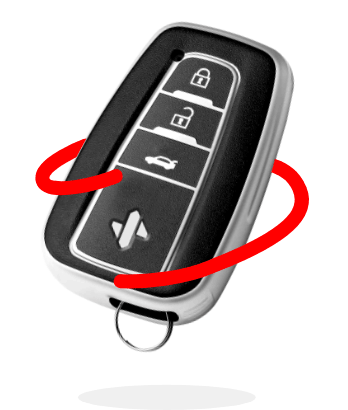But there isn’t a one-size-fits-all cost when it comes to lowering your vehicle.
There are other questions about costs you’re probably asking: How much does it cost to lower a vehicle? How much does it affect insurance rates? Is it legal?
Let’s look at some factors involved in lowering a car.
HOW MUCH DOES IT COST TO LOWER A CAR?
Unfortunately, there’s no simple answer to this question. Many factors can influence the cost of lowering a car, including the type of car that needs to be lowered and the specific modifications that are required.
On average, the cost of lowering a car will likely range anywhere from a hundred dollars to a few thousand dollars, depending on various factors.
Some common approaches to lowering a car include installing new dampers, coilovers, springs, or airbags and fitting the vehicle with new wheels and tires. Coilovers and lowering springs are more expensive, but they provide better handling and stability.
Airbags can be less expensive, but they don’t always provide the same level of performance.
Each of these options will require specific tools and other equipment, which can increase the overall cost. There are also different coilover and spring variations, so that’s something to keep in mind when budgeting for the project. However, for drivers who want that cool lowrider look without sacrificing too much comfort or performance, it can certainly be worth it in the end.
Is Lowering a Car Legal?
Legality is another important consideration when lowering your car. In most states, there are laws governing how low a car can be without requiring special equipment, such as fender flares or underbody lights. Be sure to check your local laws before starting any work on your car.
Does Lowering a Vehicle Affect Insurance?
In terms of car insurance rates, lowering a vehicle will usually result in a higher premium. This is because lowered cars are more susceptible to damage from driving over bumps than any other vehicles.
If you live in an area with many potholes, speed bumps, or road construction, it’s especially important to factor in the increased risk of damage when deciding whether to lower your car.
DOES LOWERING A CAR MAKE IT FASTER?
There’s no definitive answer to this question because it depends on several factors, including the make and model of the car and what type of racing you’re interested in (drag racing, oval track racing, etc.).
That said, lower cars have better aerodynamics, which can improve performance. In addition, lowered cars typically have better handling due to improved weight distribution and suspension geometry.
So if you’re looking to improve your lap times or get an edge on the competition, lowering your car could give you the advantage you need.
WHAT ARE THE ADVANTAGES OF LOWERING A VEHICLE?
There are several reasons that people may choose to lower their cars. The most common is probably the desire for a sportier look since lowered vehicles have more dramatic styling and a sleeker profile.
Many drivers enjoy the improved handling and increased safety that comes with having a lower center of gravity. Lowering your car can also help improve performance and give you an edge on the road.
Whatever the reason, there are a variety of options for lowering your vehicle, from upgrading your springs to installing hydraulic suspension systems. So whether you’re looking for a more aggressive look or want to get more out of your car, choosing to lower it can be a great way to achieve your goals.
WHAT ARE THE DISADVANTAGES OF LOWERING A VEHICLE?
There are several disadvantages to lowering your car.
- First and foremost, lowering your car can put added stress on the suspension system, which can lead to premature wear and even damage.
- Driving a lowered car often means sitting closer to the ground, which can make it more difficult to see obstacles or pedestrians in your path. This can increase the likelihood of accidents or collisions.
- Also, being close to the ground increases the risk of damaging the undercarriage of the vehicle if you hit a pothole or speed bump.
- A lowered car may also suffer from overheating issues in extreme weather because of the proximity of its undercarriage to the road surface.
Overall, there are many potential downsides to lowering your vehicle, so it’s important to weigh these risks before changing your car’s suspension system.
So, what does it cost to lower a car? The answer is that it depends on the make and model of your car, as well as how low you want to go. And while lowering your car may not significantly impact your insurance rates, it’s still important to consult with an agent to be sure.
It’s also essential to keep in mind that there are some risks associated with lowering a car — primarily that it can affect the handling and performance of the vehicle. But if you’re willing to take those risks, there are some advantages to consider when looking at ways to reduce your car’s height.
If you need help finding the best car insurance coverage for the best price, start by speaking to a SimplyIOA agent at 833.872.4467 or get an auto insurance quote online now.










